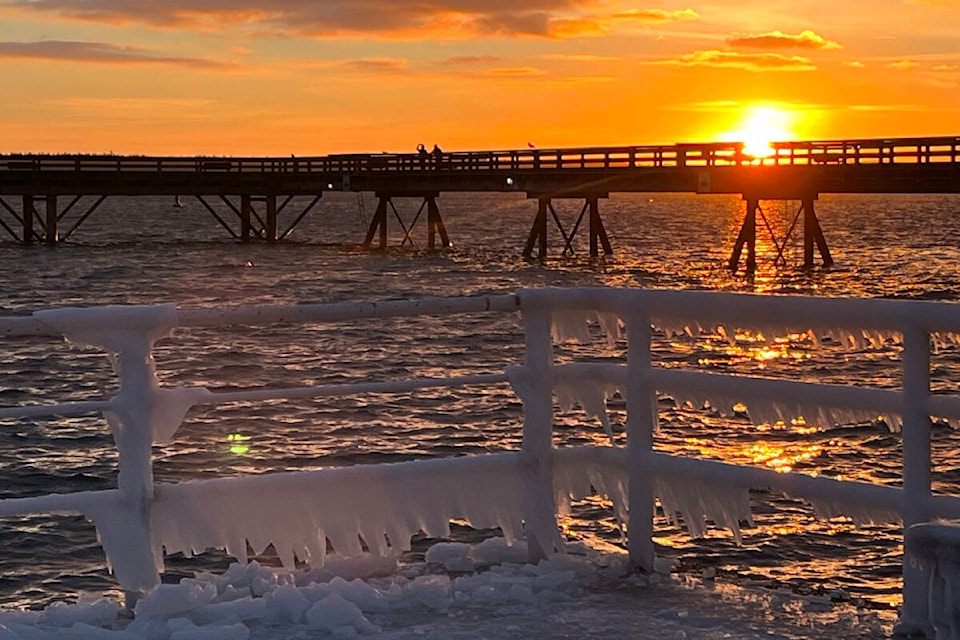As the Arctic air that saw skaters jump on local ponds and marshes warms slightly, a second round of snow and freezing rain is headed for Greater Victoria.
More winter weather is expected later Tuesday (Jan. 16) and Wednesday according to Environment Canada as a Pacific low-pressure system approaches from the west and will interact with arctic air already in place.
Snow is expected to begin Tuesday evening and continue into Wednesday morning, the agency said in a special weather statement. Temperatures will hover near zero, making the type of precipitation uncertain but Greater Victoria and the Malahat portion of Highway 1 could get freezing rain mixed with the snow. Greater Victoria will likely see a transition to rain or showers on Wednesday.
“The potential for heavy snow and freezing rain during this time could pose a hazard to travel and outdoor activities,” Environment Canada warns.
READ ALSO: Simple steps for preparedness as extreme weather set to hit Greater Victoria
With the continued winter weather, Saanich police issued a warning for residents with tips to stay safe.
“With subzero temperatures in the forecast, we encourage everyone to take steps to stay safe and warm and utilize available warming resources as needed,” Sgt. Damian Kowalewich said in a statement. “Please take time, plan ahead and adopt a winter driving mindset.”
More winter weather is expected on Tue & Wed for #VanIsle. ❄️ Arctic air & moisture from a Pacific low pressure system to unleash a mix of rain, freezing rain & snow!
— Emcon Services Inc. - South Island Division (@EmconSouthVI) January 15, 2024
Monitor #DriveBC for current weather & road conditions!#ShiftIntoWinter#BCHwys#YYJtraffic#ServiceArea1 pic.twitter.com/p9dSP0p5Dr
Even those who drive well in bad weather should avoid taking unnecessary risks by venturing out, police said. Drivers who do go out should adjust speeds down to account for lower traction when driving on snow or ice.
Accelerate and decelerate slowly. Apply the gas slowly to regain traction and avoid skids. Increase following distance to five to six seconds to provide the longer distance needed if you have to stop.
READ ALSO: Island drivers urged to prepare for the rain, snow, and fog of winter
Slow down and move over at the sign of first responders, roadside technicians, tow providers or stranded drivers along the side of the road.
Kowalewich said officers receive updates on available shelters in the Capital Regional District and will connect vulnerable people with shelters as needed.
Residents can search a list of available shelter spaces online at smap.bchousing.org or call the shelter and street hotline at 211.



